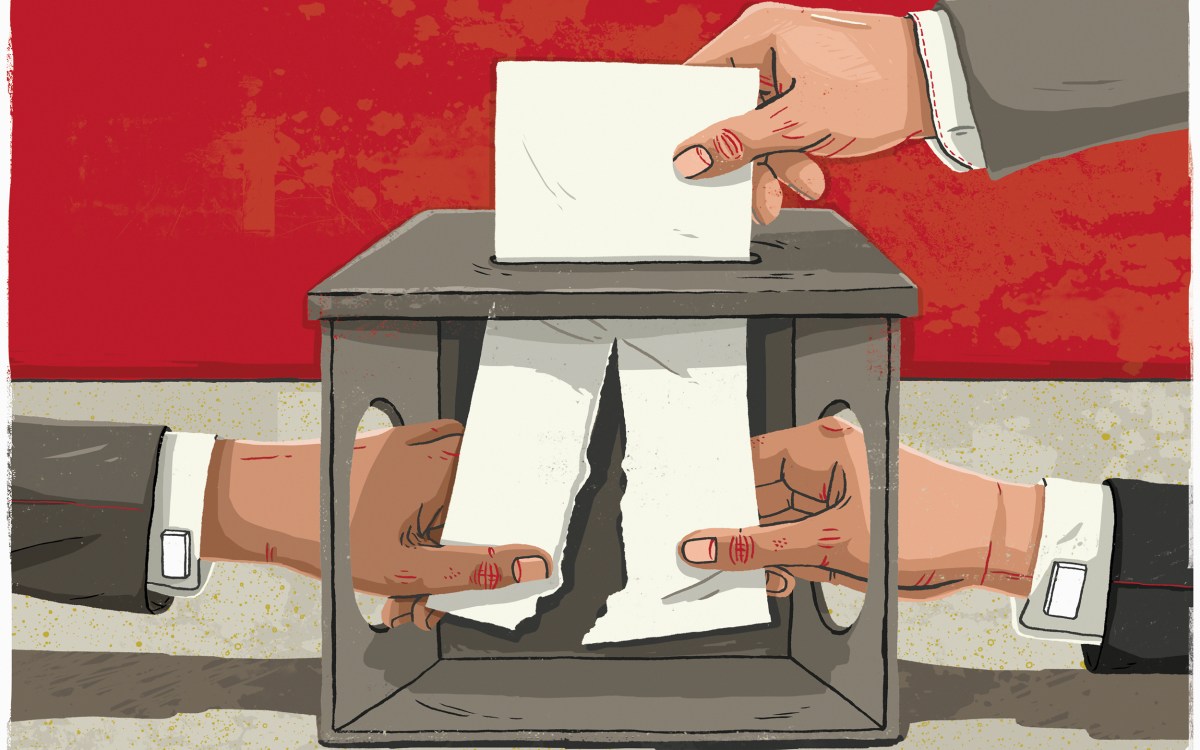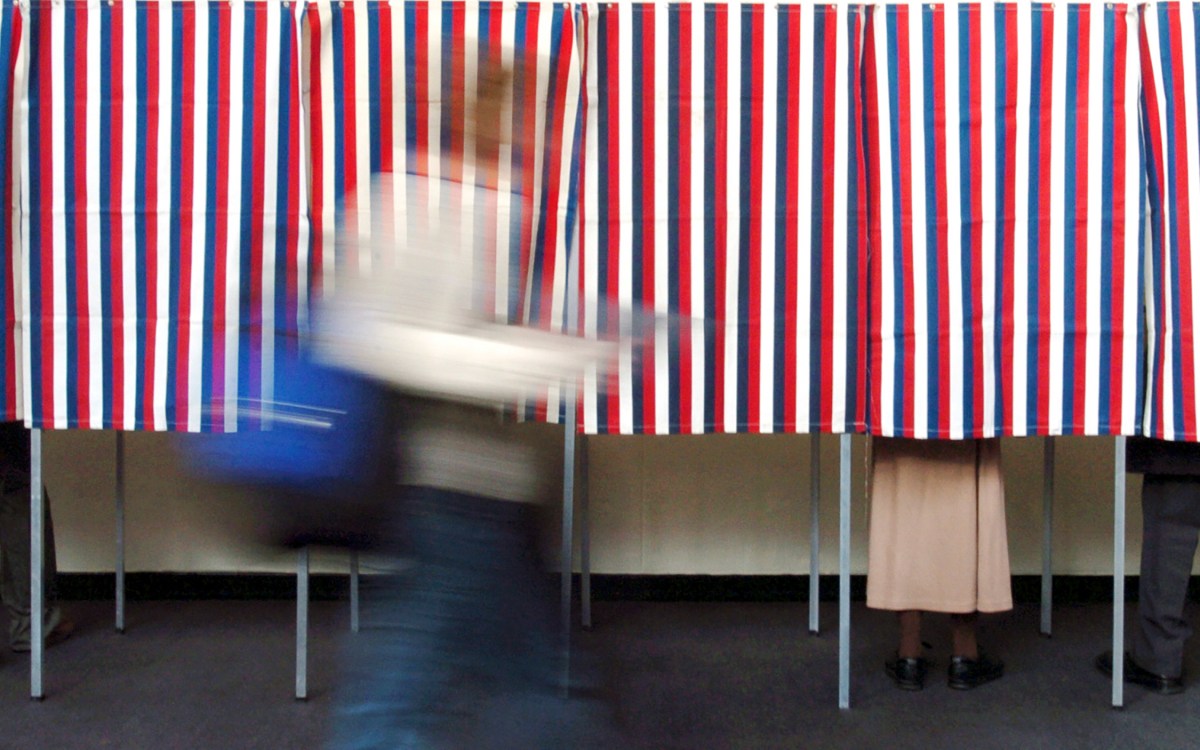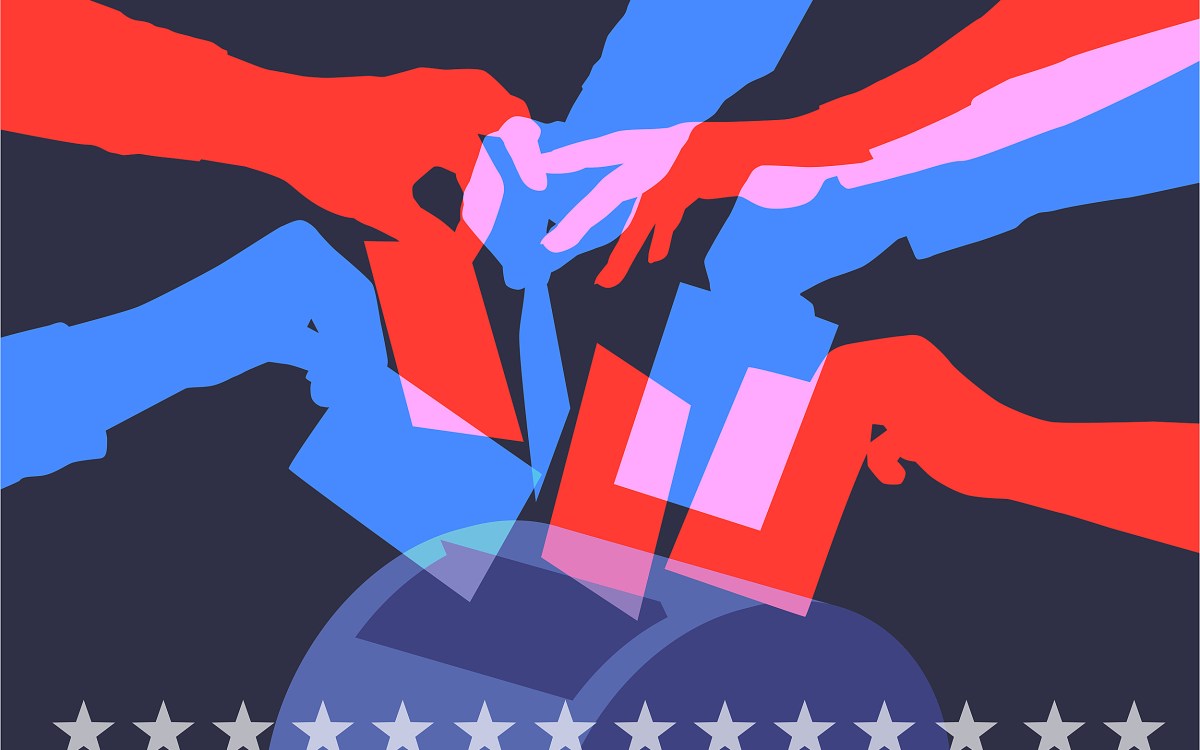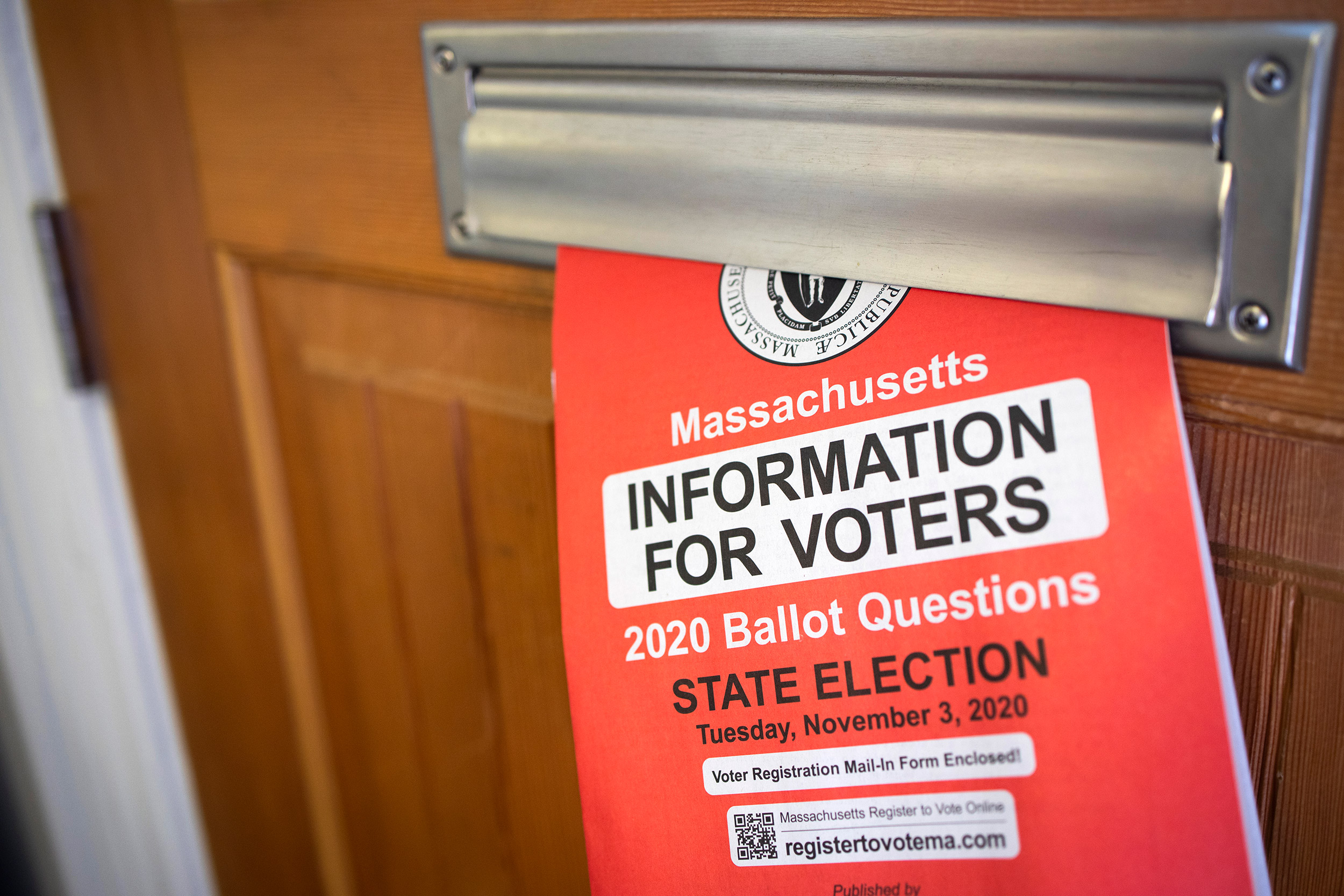
The Massachusetts Information for Voters booklet includes the 2020 Ballot Questions and a voter registration mail-in form for the Nov. 3 election.
Stephanie Mitchell/Harvard Staff Photographer
Voting 101: A primer
Harvard links up with National Voter Education Week to do what it does best: Teach
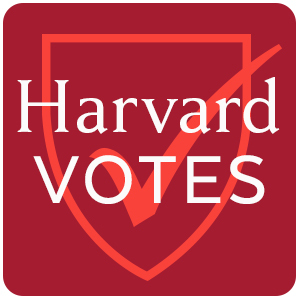
Most Americans already know for whom they will cast their ballot for president, and there is little that can happen to change their minds. But more than the presidency must be decided by Nov. 3. From choosing how to vote during the pandemic to understanding the ballot initiatives to familiarizing yourself with candidates for the many lesser races, there is plenty of work to be done in October.
To help with that, Voter Education Week kicks off on Monday. Part of the Harvard Votes Challenge, a University-wide nonpartisan effort organized by the Harvard Kennedy School’s Institute of Politics and Ash Center for Democratic Governance and Innovation, the five-day event breaks down the process into a different focus daily: on the history and importance of voting, the mechanics of casting a ballot by mail or in person, making a plan to vote, and getting to the bottom of the initiatives.
Voting is a University priority from the top down. Speaking at the First-Year Convocation in September, President Larry Bacow said, “If you are eligible to vote, we expect you to register, to inform yourself of the candidates and the issues, and to cast a ballot.”
The campus is well on its way. “What’s exciting is our polling at the Institute of Politics demonstrates that more and more young Americans are engaged in politics,” said Mark Gearan, its director. The numbers back this up: In the 2018 midterm elections, the voter participation rate among the eligible citizen student population more than doubled to 48.6 percent from just 23.6 percent in 2014 — surpassing the national average of 40.3 percent.
There’s still a gap, however. Although 48.6 percent of eligible students voted, 75 percent were registered to vote. “The idea of this initiative is to bridge this gap, from registering to vote to actually casting a ballot,” explained Gearan. “Given the pandemic, it is a complicated process.”
Harvard’s Voter Education Week — part of the National Voter Education Week project — will begin Monday with the theme #VoteReady. The goal is to help eligible voters register or check their registration status. Tuesday is #MailReady, requesting and understanding each state’s requirements for mail-in voting. Wednesday, #VotePlanReady will focus on in-person voting, which has grown more complicated as the pandemic has closed some voting places and placed restrictions on others. Thursday, #BallotReady connects voters with information and resources about issues on the ballot, many of which are state- or locale-specific. Closing out the week, Friday is #WeReady2020, empowering voters to make a plan to vote or volunteer and also engage and activate friends and family to cast ballots.
Kevin Ballen ’21, co-chair of Harvard Votes Challenge.
Stephanie Mitchell/Harvard file photo
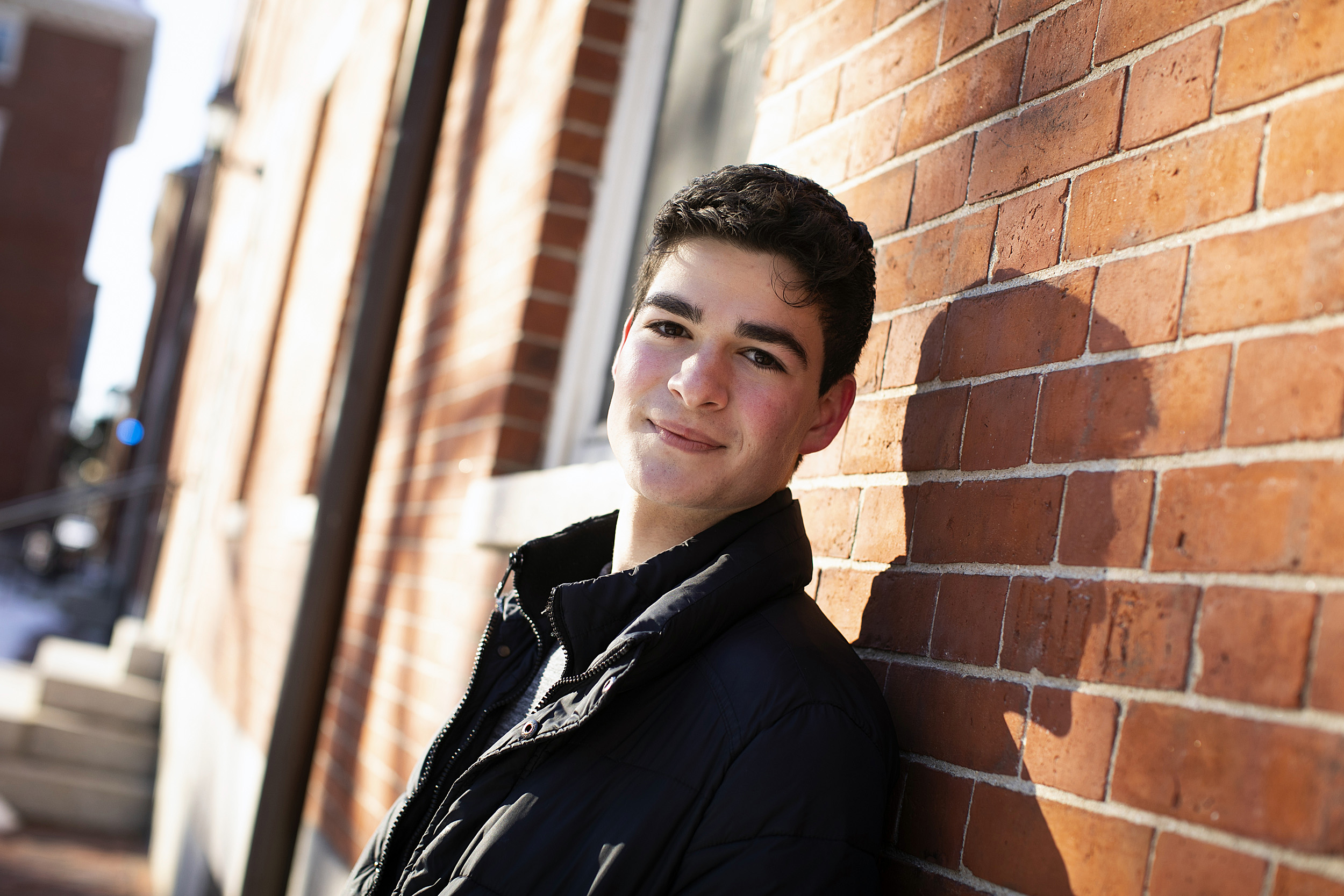
“Every single day you can count on content through our various channels, a mix of videos and stories. We want to juxtapose faculty, national leaders, and students,” said Kevin Ballen ’21, co-chair of Harvard Votes Challenge. On Tuesday, for example, CNN commentator and IOP fellow Alice Stewart will lead a study group on voting. Thursday, the IOP will host a JFK Jr. Forum, “What’s on Your Ballot?,” covering issues including voter rights restoration and ranked-choice voting. (Complete programming may be found at the Harvard Votes Challenge site.)
Because more than 15 million Americans have reached voting age since the last presidential election, many of the week’s activities are geared to first-timers. But Ballen says even experienced voters may be grappling with new issues: Where do you mail your ballot? What’s a notary?
Understanding the many options on the ballot is also a priority. “When you’re voting for the president, you’re voting for potentially 20 positions, everything down to the school board,” said Ballen, who worked with the national initiative this summer. In addition to explaining the importance — and potential impact on daily student life — of some of those down-ballot races, the initiative will connect with state-specific affinity groups and speakers who can address issues that voters across the country will be deciding. “We’ll dive into some of those ballot initiatives on a state-by-state basis.”
Of course, none of this matters if students don’t vote. That’s why Friday is focused on what Ballen calls, “Creating a culture and a community of voting.” That can range from making calendar notations of when your ballot should arrive and when it must be mailed off, or blocking out two hours to be sure of adequate time to vote in person. (Voting itself takes only minutes; lines can vary.) It also means reaching out to family and making sure they have their plans in place. “Or texting three friends and holding them accountable to their voting plan,” said Ballen, who plans to vote by mail in Virginia.
“We’re encouraging the whole community to make a plan,” said Gearan. His is to be in line at his local polling place early on the morning of Election Day. “How are you going to vote? What are the options available for early voting? For voting by mail or on Election Day? We want people to think through those deadlines and the calendar.”
Summed up Ballen: “We don’t want a single barrier to get in the way of casting a ballot.”


